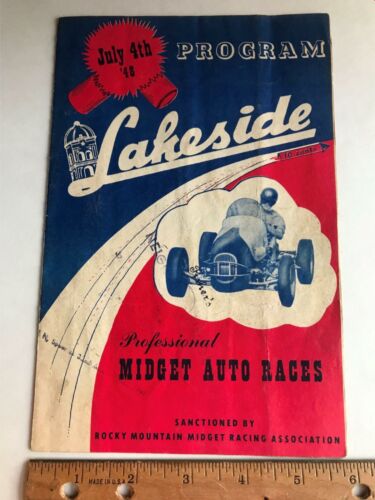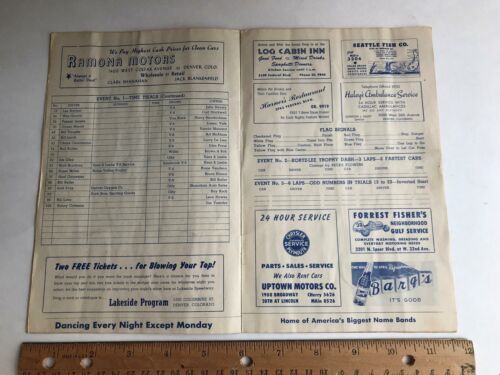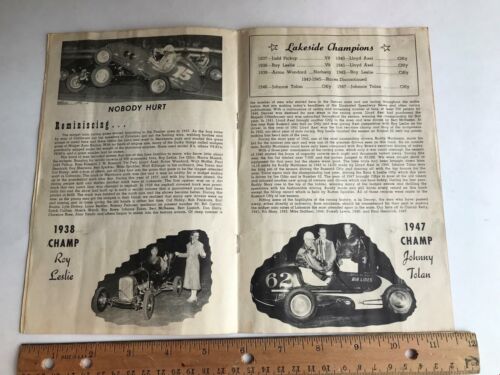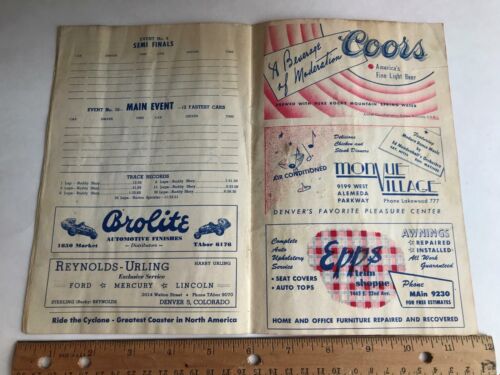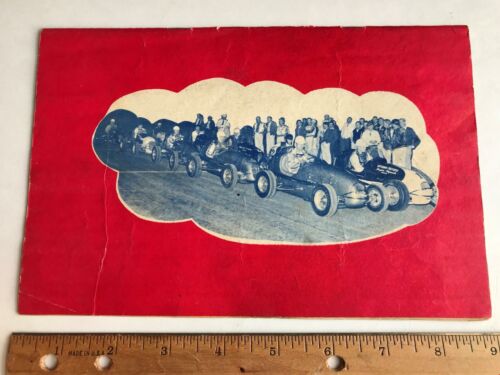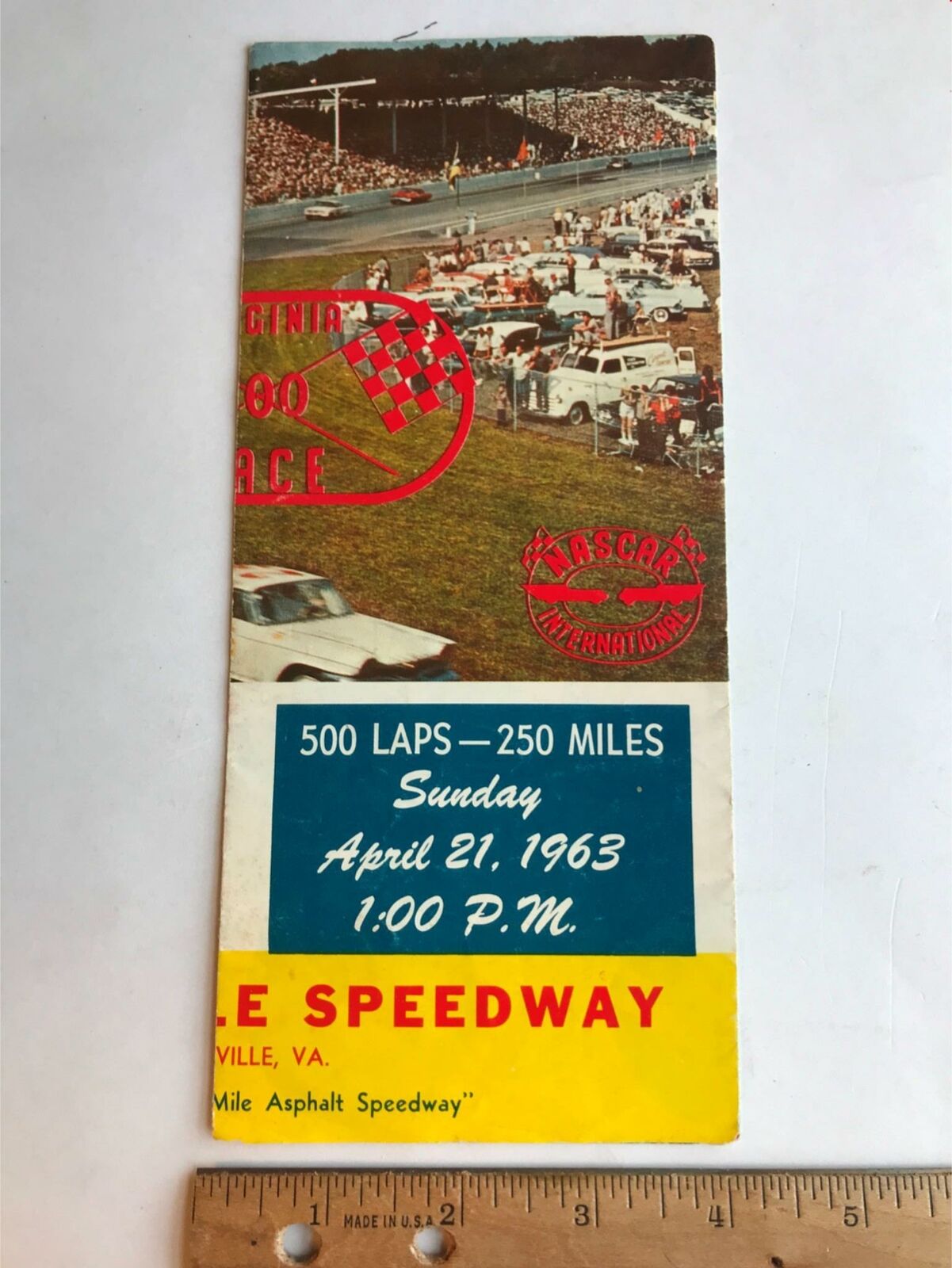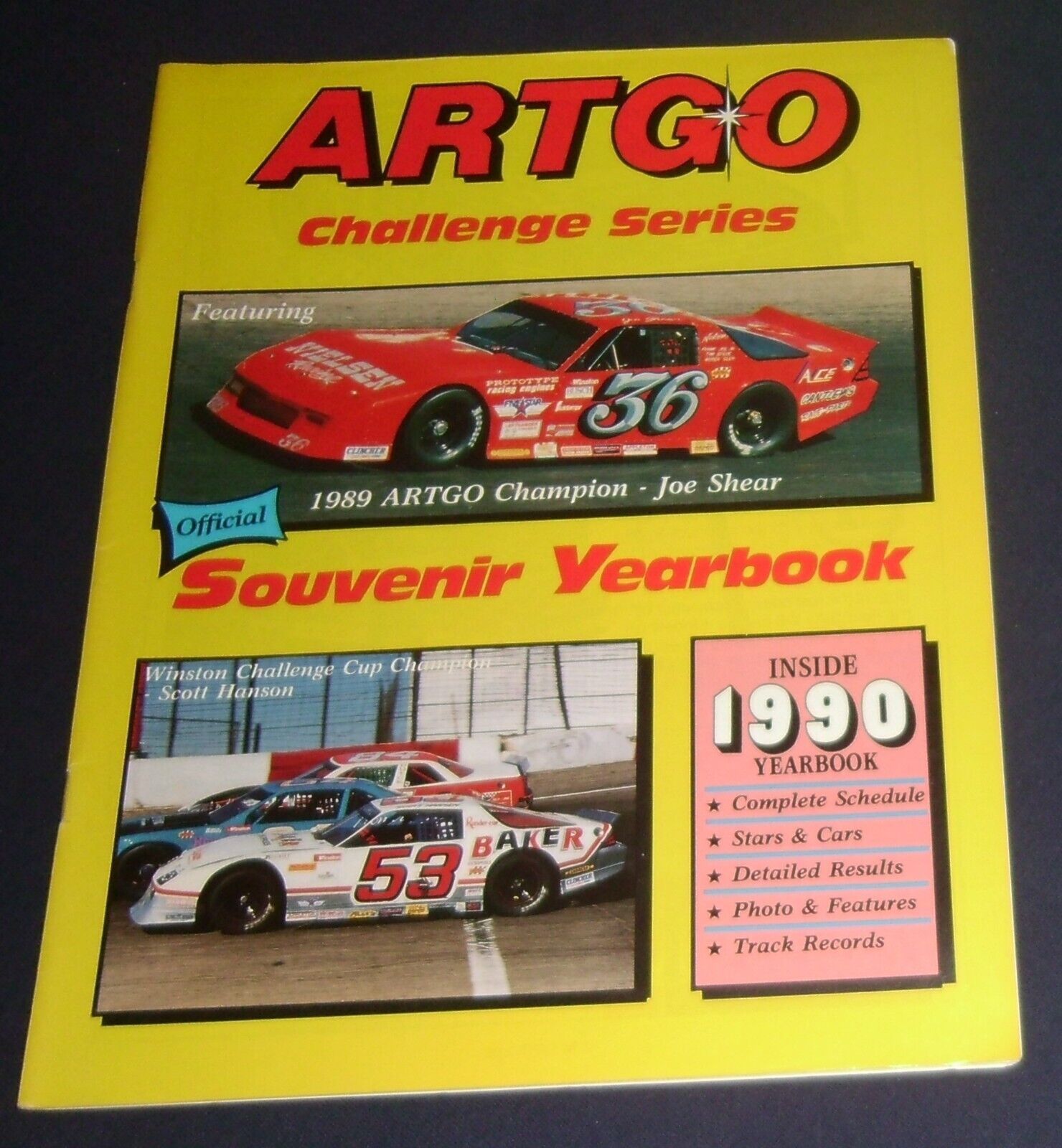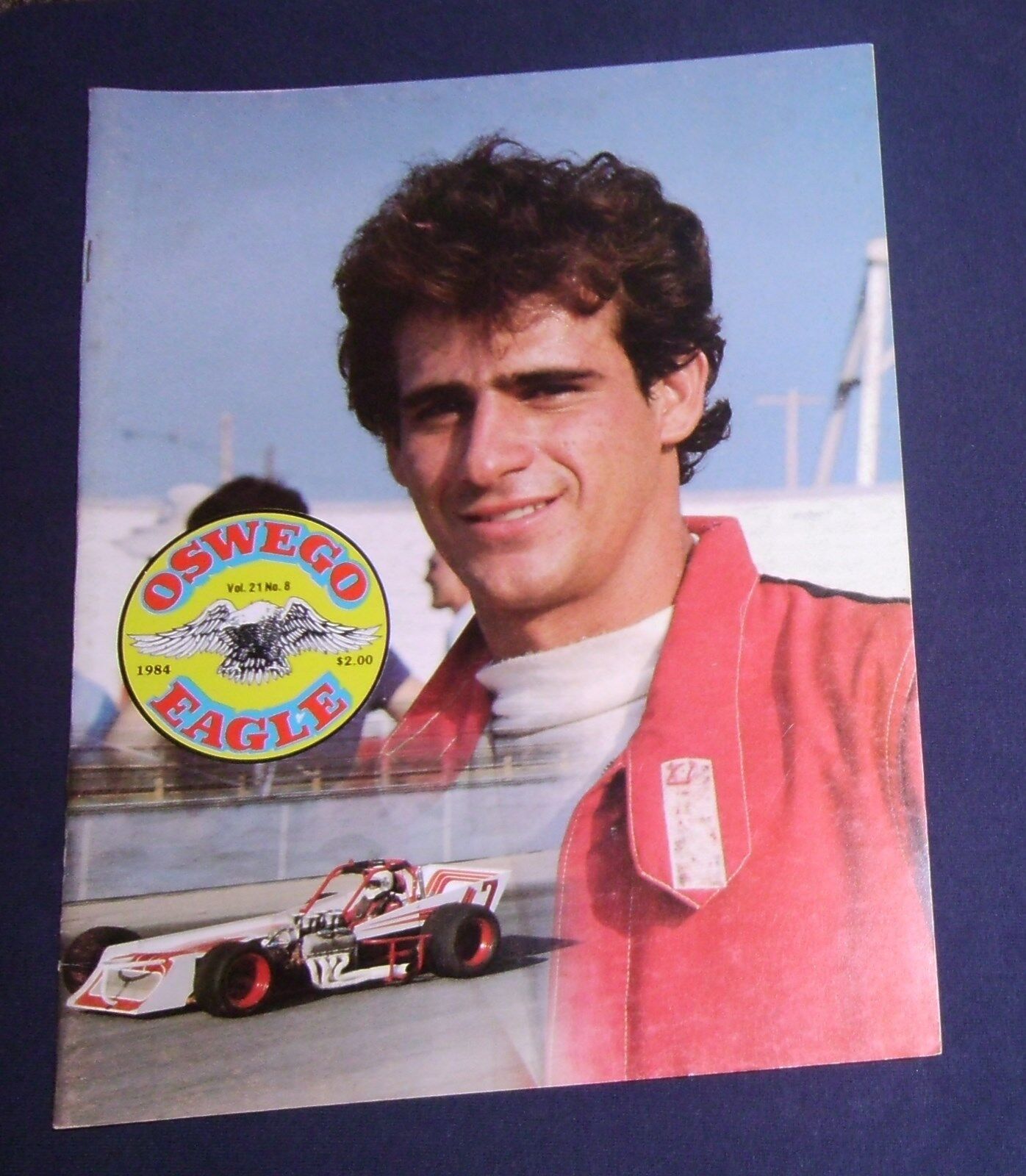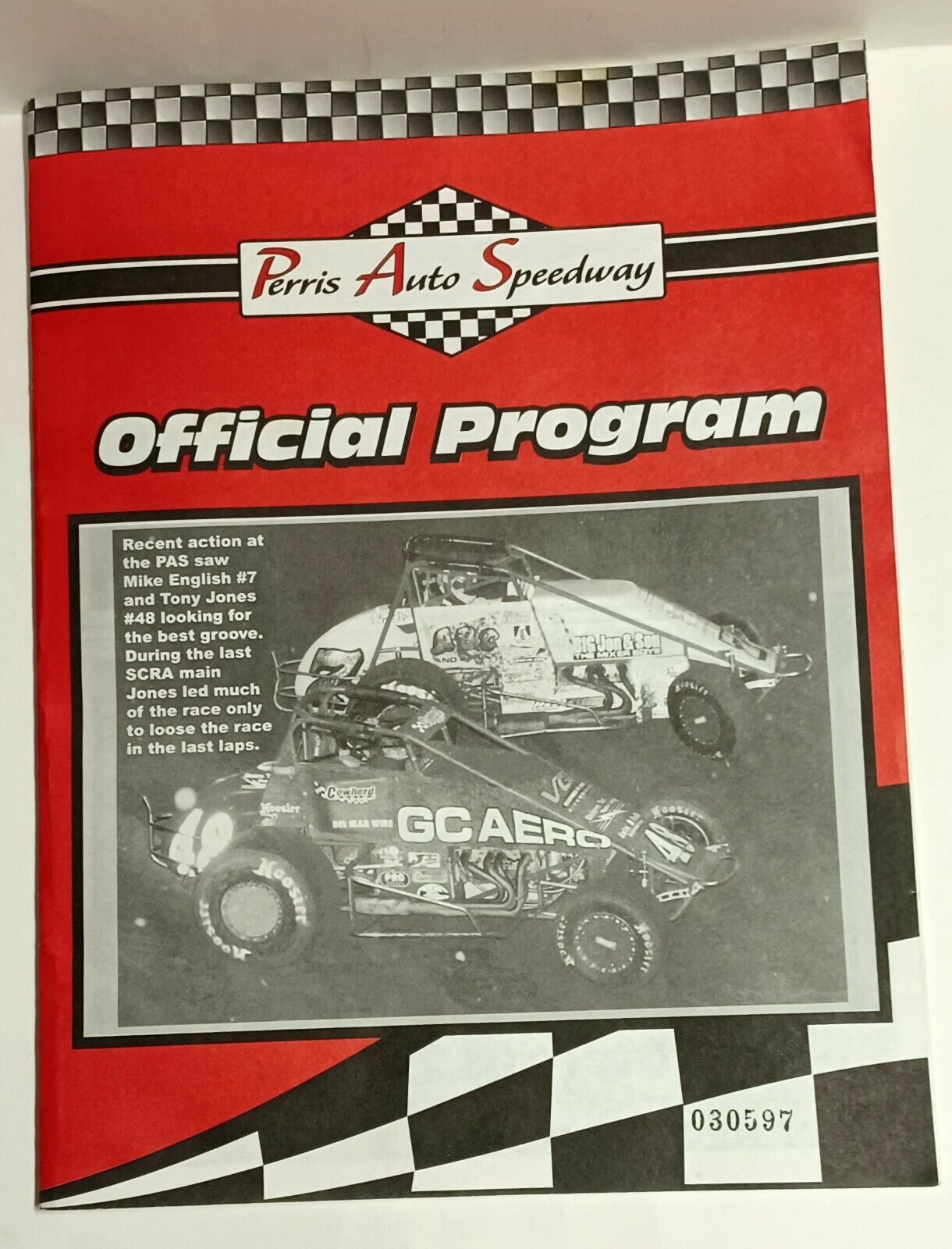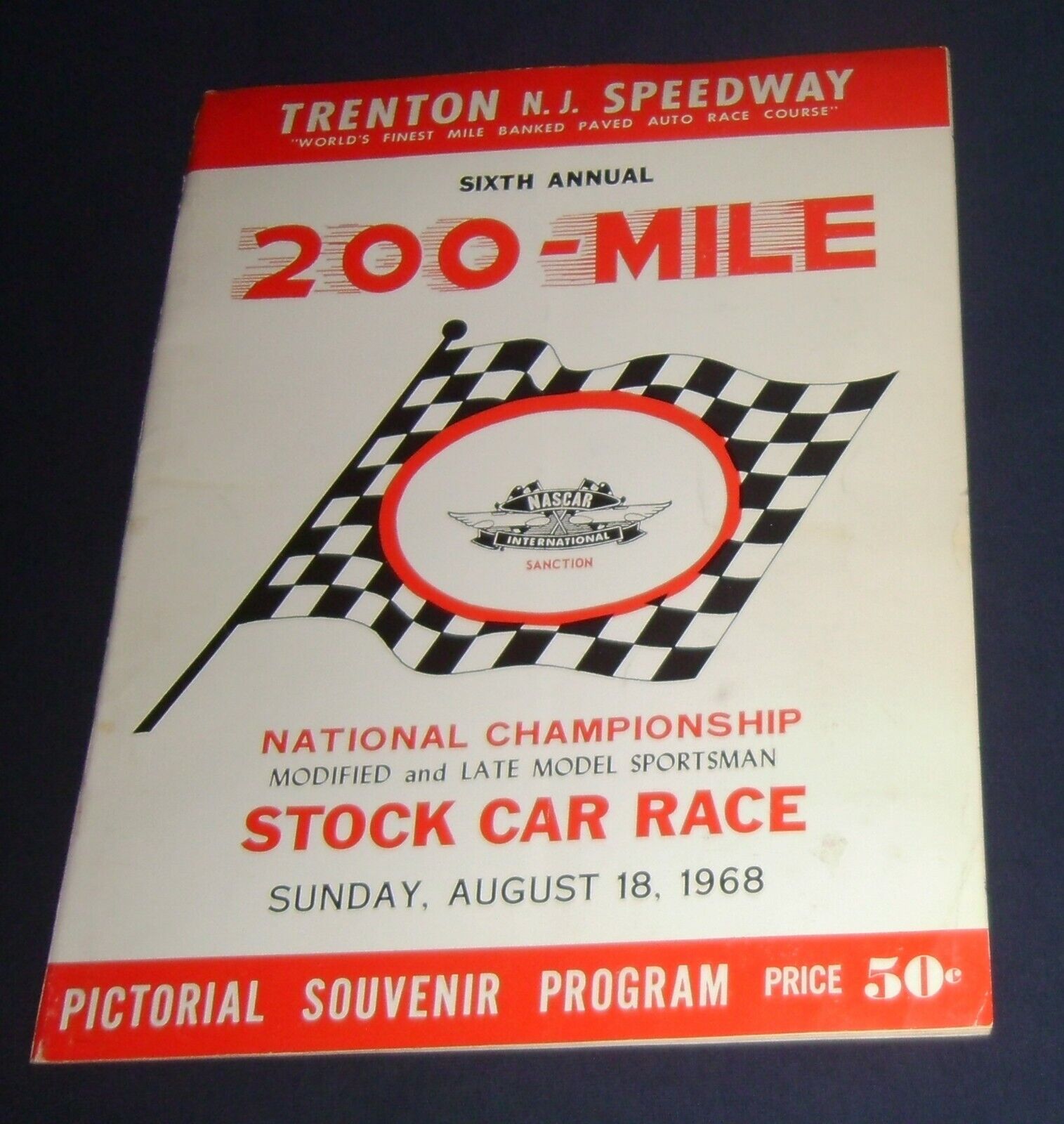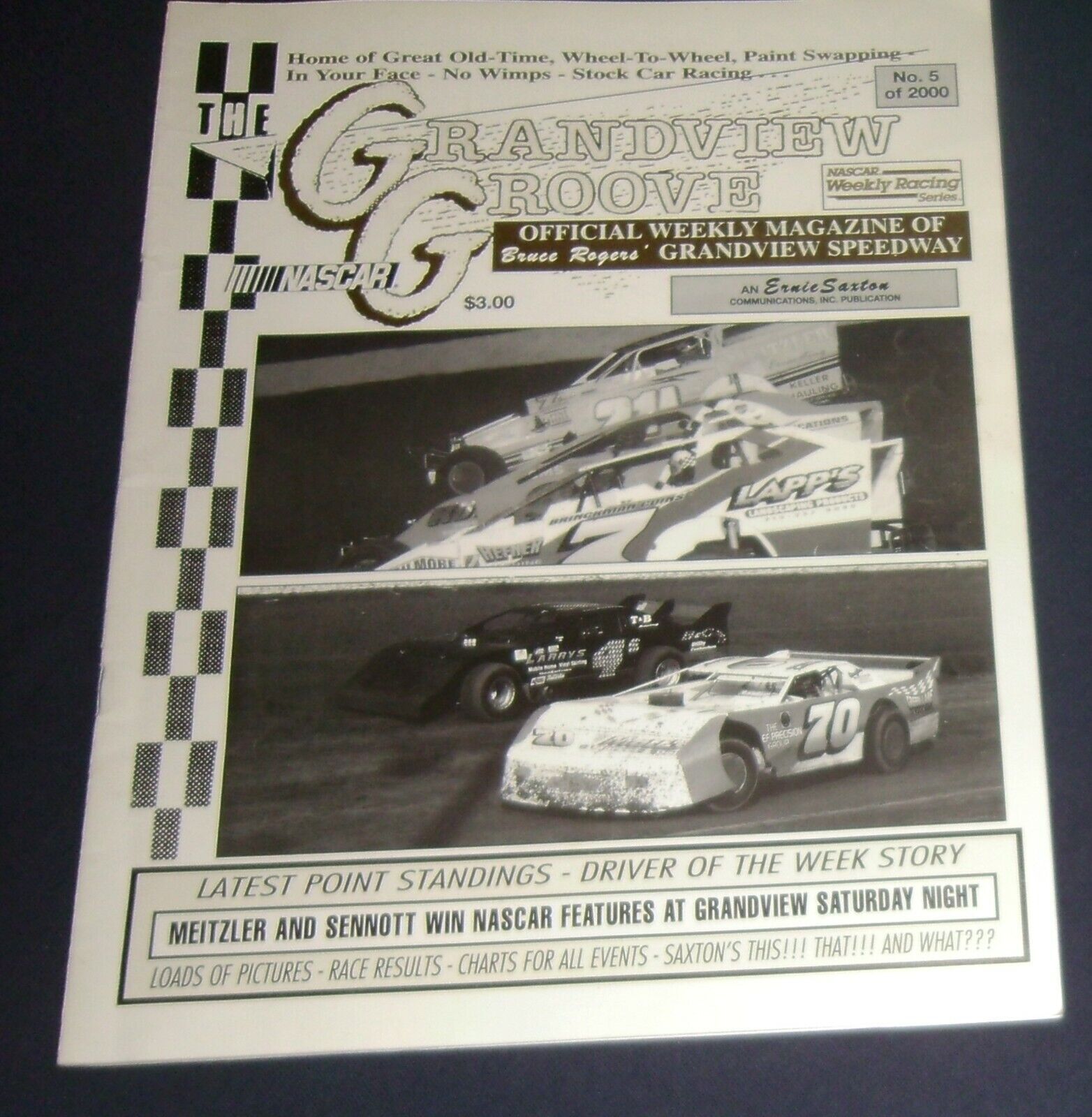-40%
vtg 1948 Lakeside Denver Colorado Midget Auto Race Rocky Mountain Racing Program
$ 21.09
- Description
- Size Guide
Description
Official Program /Lakeside Professional Midget Auto Races
Sanctioned by Rocky Mountain Midget Racing Association
Dated July 4th, '48
smaller size , Soft Cover, 8 pages, plus cover , used good condition. Light creasing and waving to pages, also some light discoloration spotting.
Great advertising thru-out of local businesses around Denver Colorado....Wynn's Oil, Gamble's Store, Forrest Fisher's Gulf Service, Koch Auto & Parts, Wester Motor Rebuilders, and more...
please watch for a few other similar but different Lakeside programs I will be listing.
--------------------
back cover advertisement not dated.
Information found on the internet , concerning the advertisement on back page.
Introduced at ,475, but quickly raised to ,621, the Family Club was the cheapest Jet ever. Like the Henry J, it was said to have been created for the millions of people who could never before afford a brand-new
car
. In fact, it was a desperate attempt to find buyers for the Jet, which was badly lagging in sales.
It had no exterior brightwork other than bumpers and hubcaps, rubber moldings around the windshield and backlight, cheap cloth upholstery, and rubber floor mats. Although it offered the usual range of drivetrains, it failed to relieve the accumulating deficit. A single Jet
convertible
was also built as an experiment; sales manager Virgil Boyd bought it for his son.
Through April 30,1954, when Hudson closed down as an independent company and joined
Nash
to form American Motors Corporation, it had lost .2 million on sales of only .7 million. Had the year continued at that pace, Hudson would have lost .6 million, almost double the 1953 record loss.
As it was, AMC didn't report separate Hudson results after the May 1 merger, but Hudson production continued in Detroit through October 29. Only 50,660 cars were built for the model run, and just 14,224 of those were Jets. For the next three years, all Hudsons would be based on Nashes and built in Kenosha, Wisconsin, after which the marque would disappear forever.
It's difficult to avoid the temptation of singling out one model as the reason for failure. The One Twenty did not sink Packard, nor indeed did the Packard Six, although the Six contributed; the Lark didn't condemn Studebaker; even the Henry J, as bad a product decision as it was, cannot be called the car that killed Kaiser. The Edsel was a marketing miscue, but hardly the catastrophe" it is often held to be; Ford was making record profits a couple years later. The Corvair or Vega meant nothing in the broad Chevrolet picture.
But if ever there was a single model that had a devastating effect on its maker, it was the Hudson Jet. Product-wise, it was almost exactly wrong. Its timing -- at the height of the horsepower race, with the public besotted by longer, lower, wider cars and V-8 engines, and General Motors and Ford virtually giving away their cars in a price war -- was almost guaranteed to make it a failure no matter how good it was -- and it wasn't that good.
It gobbled up million in tooling expenses at a time when cash was needed to update Hudson's stock-in-trade, the big Hornets and Wasps, which hadn't seen a new body in seven years and desperately needed a modern V-8 to meet the competition.
Despite its good qualities, the Jet was not, in the end, the car those big Hudsons had been, not even a junior edition of them. Hudson, after all, was not a big company. Sixteen million meant a lot. There is no doubt at all that the firm should have put that money into a car with a proven market: a V-8 Hornet, for example.
-------------------------------------------------------------------------------
information below take from CARC website run by Mike Wood.
The state of Colorado has a strong oval track Auto Racing heritage. The Colorado Automobile Racing Club (CARC), the oldest auto racing club in Colorado, has played a star role in that racing heritage. thank you for visiting our website and giving us the opportunity to bring the rich 70+ year coupe racing history to you. Please take a few minutes to look over our History page to learn more. Help us keep our sport alive. we hope you will keep the CARC and modified coupe racing a part of Colorado's racing scene for many years to come!
The Colorado Automobile Racing Club (CARC) was formed in 1946 to bring the exciting sport of auto racing to the Denver, Colorado metro area. Fourteen charter members, mostly of the "Top Hats" hot rod car club, formed the CARC. These men returned from World War II after having been fighter pilots and they knew that a calm and sedentary existence would not be exciting enough for them. They began racing, what were known as, roadsters at local venues including north Table Top mountain, DuPont Speedway, and Adams County Fairgrounds.
In 1949, they found a more permanent location at Englewood Speedway, on a 1/3 mile dirt track in a southern Denver suburb (Englewood) and raced there for three years. Popular drivers of the roadster era included Keith Andrews, Willie Young, and Sonny Coleman.
1952 saw the CARC begin racing at north Denver's Lakeside Speedway, adjacent to the popular Lakeside Amusement Park. It was a tight 1/5 mile paved oval that made for close quarter racing and crowded fields. In this era, over 100 cars were listed and most nights saw a turnout of 65-75 cars. The Lakeside years are mostly considered the CARC's Golden Era, when the grandstands were packed every Sunday night. An attempt was made to race twice a week on Wednesdays and Sundays to fulfill the spectator demand for more action. At that time, there was very little competition for the Denver sports dollar and the CARC was a large drawing card. A late model class made up of more contemporary cars was developed in the mid-1950's but wasn't as popular as the "semi-modified stock cars" that made the CARC famous. Well-known drivers during the 1950's included Sam Gallo, Bill Starks and Fritz Wilson.
Success for the CARC continued into the 60’s. Competition was still fierce for the semi-modifieds and the large crowds continued to fill the stands. The venerable Ford Flat-head V-8, which had been the main power plant through the 50's was finally replaced by the Ford straight six. Lap times continued to fall at a rapid rate as chassis development caught up to engine modifications. Popular drivers of the early 60's included Jack Thoms, Jim Malloy, and Sam Sauer.
Following the trend of automobile manufactures of that era a new division for "compact cars" was added in the mid-1960's to inflate the racing program. Ford Falcons and Plymouth Valiant’s were the heavy hitters for the first couple of years. The semi-modifieds were now referred to as "fully modified stock cars", which by this time, had very little that was stock remaining on the cars. Speeds continued to climb and though fields were somewhat smaller, the competition was still keen. After just a couple of years, the compact class became a true late model class with Chevrolet Camaros and Ford Mustangs providing the meat for the division. Car counts in this division expanded rapidly and drivers from other nearby speedways came to Lakeside to race with the CARC, the premier racing club in Colorado. Many would race at Englewood (which had been paved in 1961) on Saturdays and race at Lakeside on Sundays. The CARC still held the reputation as a local heavyweight in the racing fraternity. Popular modified drivers in the late 1960's included Don Wilson, Bill Vaughn, and Wayne Stallsworth. Making their marks in the late models were Don Carelli, Lloyd Land and Clarence Krieger.
Listing and template services provided by inkFrog
